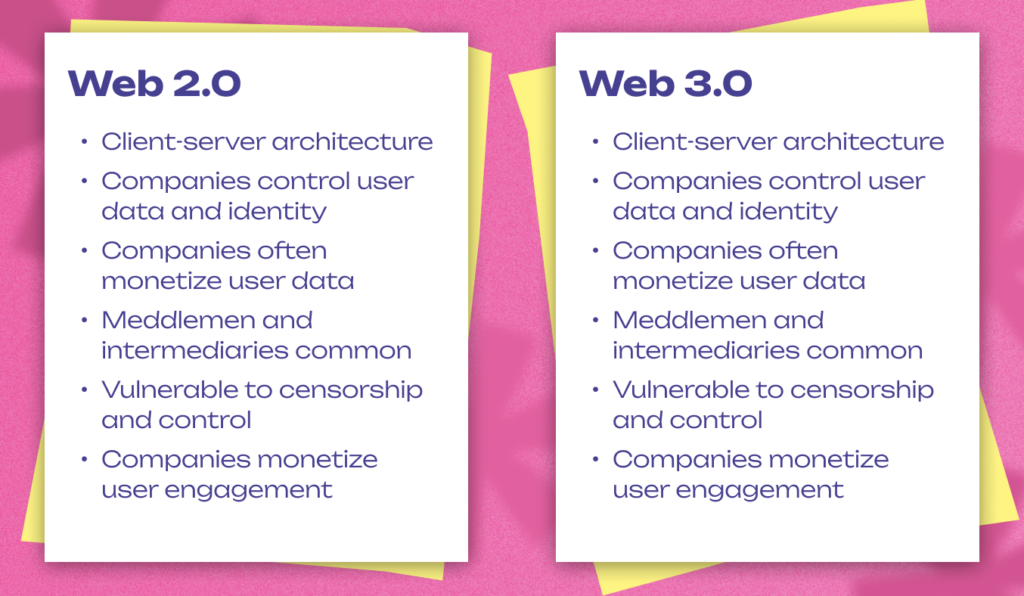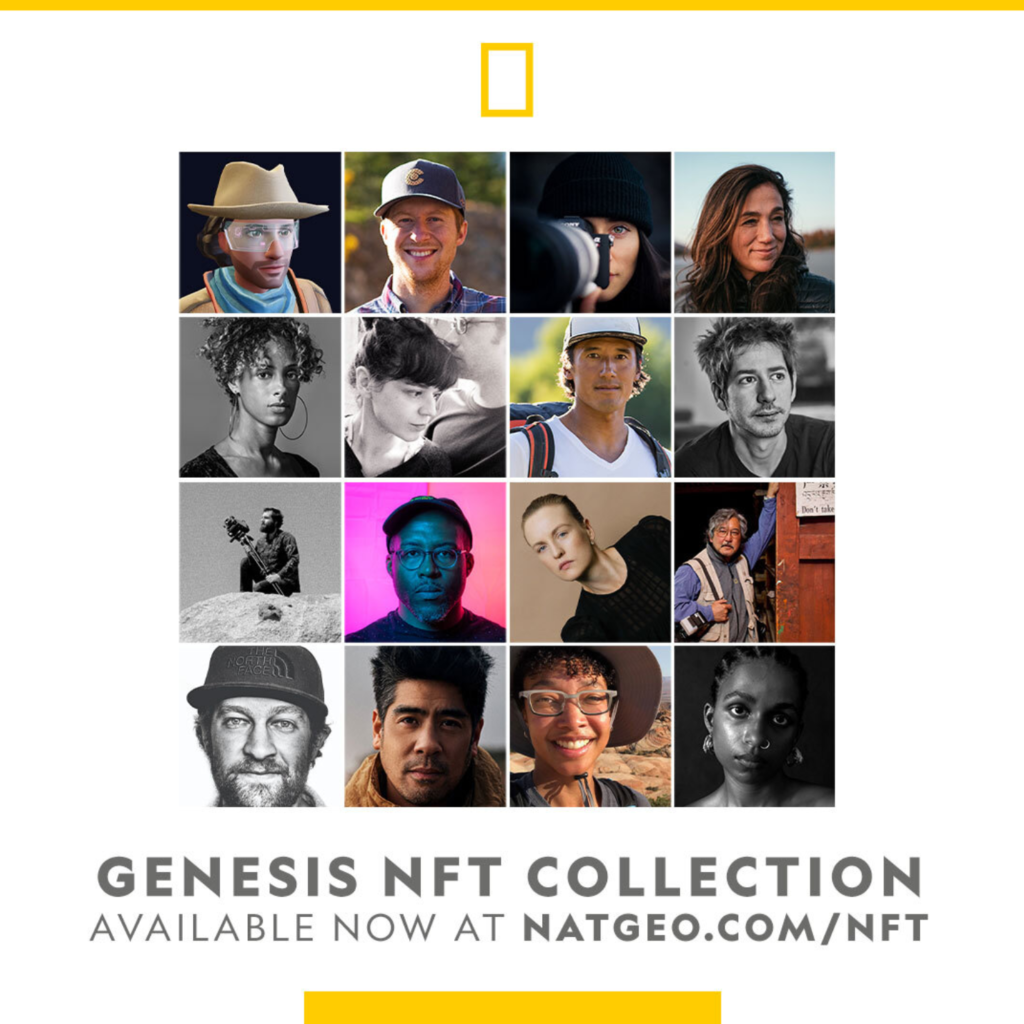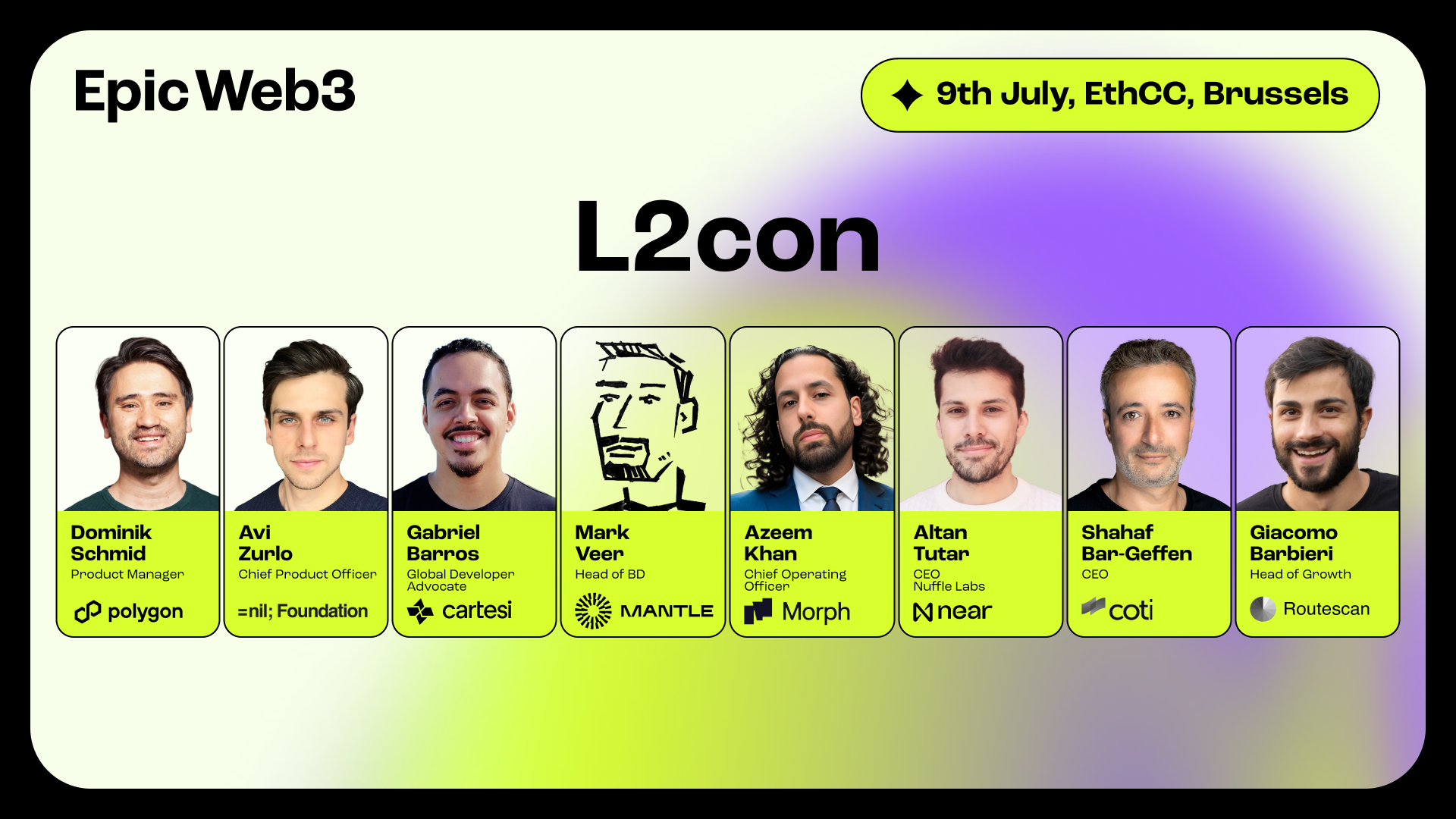Why Web2 Brands Still Fail at Web3 and How to Fix It

When Web2 brands move into the Web3 space, they typically run into problems they didn’t predict. Even with deep pockets and decades of marketing experience, many established brands still struggle to connect with decentralized communities. People are often held back by their own thoughts rather than financial constraints or a lack of brand recognition.
This gap is why so many well-known brands that enter Web3 wind up leaving without a word. But knowing exactly what went wrong might help you avoid making expensive mistakes with your business.
Understanding the Web3 mindset
People are products in Web2. Platforms get people to pay attention by collecting data and running ads. Executives make decisions that affect consumers. People trust centralized institutions to handle transactions and data responsibly. This strategy has worked for decades because it was easy to grow, but it gives a lot of power to a small number of companies.
Web3 flips this power dynamic. Users have control over their data, digital identities, and property. Community governance means that everyone makes decisions together. People don’t trust an organization; they trust code that is open to everyone. Value goes straight to the people who are taking part, not to the corporate center.

Why Web2 brands keep failing at Web3
Most Web2 brands have a hard time since they try to employ techniques that worked in centralized ecosystems but don’t function in Web3. Brands can avoid making the same mistakes by knowing these particular ways things might go wrong.
Misaligned marketing strategies
Traditional Web2 marketing uses paid ads and influencer campaigns to get people to act quickly. In Web3, though, that strategy doesn’t work since you have to establish trust in small, self-organized groups.
People on decentralized platforms like Discord, X, and others can tell right away when someone is not being honest. When brands enter Web3 in search of quick profits rather than adding true value, they are quickly turned away. The Web3 crowd doesn’t like anything that seems corporate or top-down because the movement was started to fight against centralized control.
Prioritizing profit over utility
Web2 firms make money by selling ads, data, and subscriptions, but this way of thinking doesn’t work in decentralized areas. People in communities can tell when brands are just trying to make a quick profit instead of providing them with value. Oversized NFT drops or hasty releases are signs of exploitation, not partnership.
Successful brands focus on participation and shared value before chasing revenue. In Web3, profit follows participation.
Lack of technical and cultural expertise
Many traditional brands enter Web3 with conventional marketing agencies or in-house teams lacking blockchain or community experience. The result is a gap between ambition and execution.
Understanding tokenomics, governance, and platform culture is essential. Projects that launch high-priced assets during bear markets or stumble through basic minting errors aren’t suffering from bad PR, they’re showing their inexperience. Real success comes from teams that grasp both the technology and the unspoken rules that hold decentralized communities together.
Abandoning communities after launch
One of the worst things you can do is think of the launch as the end instead of the beginning. When brands leave their Discord servers and cease talking to fans soon after their first sales, they confirm what communities thought: the brand was never really interested in the space. This destroys trust for good.
Real-world examples of failed Web2-to-Web3 experiments
In Web3, high-budget launches from well-known businesses have failed horribly, with each failure showing a different strategic or cultural misunderstanding. Looking at what went wrong in these cases reveals that having excellent intentions and a lot of money isn’t enough.
Porsche’s mistimed premium NFT collection

Porsche released 7,500 NFTs in January 2023, each costing 0.911 ETH (about $1,400). They thought there would be a lot of interest from both luxury and Web3 fans. Only 2,300 were sold before the mint closed, and resale prices dropped below the mint value very fast.
The initiative didn’t work since it didn’t take into account community norms and market realities. It started during a bear market, set an unsustainable premium pricing, and didn’t offer anything useful other than undefined “exclusive experiences.” After the debut, engagement on Discord plummeted right away, which supports the idea that Porsche saw Web3 as a short-term campaign rather than a long-term ecosystem.
National Geographic’s environmental contradiction

In January 2023, National Geographic released its “Genesis” NFT collection to honor the brand’s history of great photography. Instead of joy, it got a lot of negative feedback. Fans thought there was a problem between the brand’s environmental objective and the fact that proof-of-work blockchains are known for being high-energy. The move made some doubt the company’s trustworthiness and whether it was in line with its primary beliefs.
The launch went worse because of technical problems. The minting platform Snowcrash had problems with wallets and transactions that didn’t go through. A promotional post with a picture of a Bored Ape Yacht Club was also called tone-deaf. People who follow traditional methods and people who use Web3 both thought the drop was fake. There weren’t many sales, and the project ceased quietly soon after.
Liverpool Football Club’s exploitative oversupply

Liverpool FC and Sotheby’s teamed together in April 2022 to release the “LFC Heroes Club” NFT collection, which features algorithmic art of the team’s players. It was sold as a fresh way for fans to own club history, but it swiftly backfired.
The team made more than 171,000 NFTs available, which took away any sense of rarity. Supporters, who were already having money problems, thought the decision was more about making money than about the fans. It sold approximately 6%, and then the community stopped doing anything. The project’s Discord and social media platforms became quiet after a few months, and the club didn’t give any public updates. For a lot of supporters, it made them think that Liverpool joined Web3 to make money, not to create long-term relationships.
How Web2 brands can fix their Web3 strategy
Instead of giving up on Web3 after a few failures, marketers can make systematic adjustments that fix the problems that led to community rejection. According to Avery Akkineni, President of Vayner3:
“Web3 is the next iteration of the Internet. It will be empowered by a new generation of consumers who have natively accustomed themselves to valuing digital assets.”
These strategies shift the focus away from extraction and emphasize genuine value creation.
Build a genuine long-term vision
Stop thinking about NFT dips as short-term tricks. Make a long-term Web3 plan that focuses on community value instead of small successes. Tokens and NFTs shouldn’t just be things to collect; they should also give you permanent benefits, access, co-creation, or loyalty rewards. Changing digital experiences indicate that you care and help keep people interested over time.
Hire native Web3 talent
You can’t fake native understanding. Hire people who know the culture inside and out, either by hiring experienced builders or by buying tiny Web3 teams. Outside groups can help with execution, but having experts on staff is what makes sure that the work is real and will be trusted for a long time.
Prioritize community-led engagement
Treat your audience like partners, not customers. Hold open AMAs (Ask Me Anything), share news, and ask for comments that will help you make decisions. People become supporters, not skeptics, when they can have a say in how things are run or how products change.
Abstract away technical complexity
Most users don’t care about blockchain mechanics; they care about convenience. Handle wallets, payments, and security behind the scenes. Let people pay however they prefer and focus on the value, not the tech.
Build hybrid Web2/Web3 strategies
Keep what already works. Extend existing loyalty programs or digital platforms with Web3 layers like digital ownership or rewards. A hybrid approach lowers friction and makes decentralization accessible to everyone.
Brands doing it right
Three big companies have successfully made the switch from Web2 to Web3 by using very different methods that put community and functionality first. Each shows that to be successful with Web3, you need to change the way you think, not just add blockchain to what you already have.
Starbucks Odyssey

Starbucks Odyssey worked because it was familiar. Customers got collectible “stamps” just by using their credit cards to buy things. They didn’t need to set up a crypto wallet or a blockchain. Each stamp enabled genuine benefits, such as virtual coffee courses, farm excursions in Costa Rica, or early access to products.
The initiative ran on Polygon, an energy-efficient blockchain that harmonized with Starbucks’ aspirations for sustainability. Most significantly, Odyssey added to the existing Rewards system instead of replacing it. This made Web3 useful for millions of users by providing a smooth, reliable experience.
Nike’s partnership with .SWOOSH

Nike’s purchase of Web3 studio RTFKT in 2021 demonstrated that they were serious about the technology, not just trying it out. The alliance resulted in .SWOOSH is a place where people can make and trade digital clothes. Fans became partners through design contests and shared royalties.
By teaming up with EA Sports and Fortnite, Nike brought their smart wearables to a wider audience that didn’t need to deal with Bitcoin.
Reddit’s Collectible Avatars

Reddit’s Web3 move succeeded because it never announced one. Its Collectible Avatars, technically NFTs, were presented simply as limited-edition digital art made by real artists. The focus stayed on creativity, not blockchain jargon.
Reddit also built an in-app Vault wallet, letting users buy and store avatars effortlessly. This frictionless design introduced millions to digital ownership without them realizing it was Web3 at all. The approach proved that mass adoption comes not from hype, but from making technology invisible and value obvious.
Conclusion
When Web2 brands go after quick victories and approach communities like customers instead of partners, they fail in Web3. Trust is only broken by limited drips, overpromises, and silent exits.
To do well in Web3, you need to change the way you think. You need to stay transparent, involve your community, and prove you’re here for the long term. People become loyal when they get real value and are involved, not when they hear a lot of hype. Web3 isn’t just a new way to market things; it’s a change in culture, as Starbucks, Nike, and Reddit have proved.


